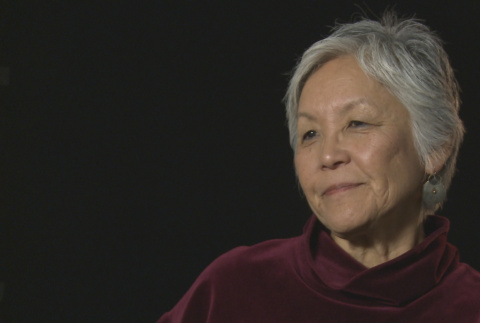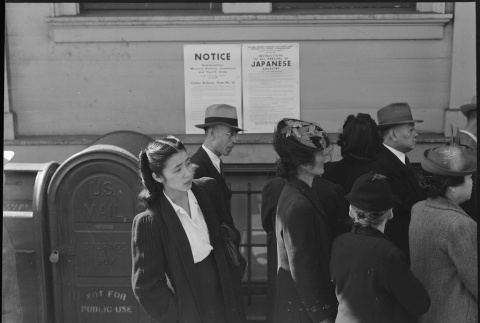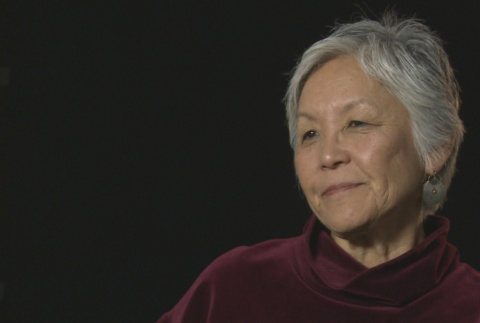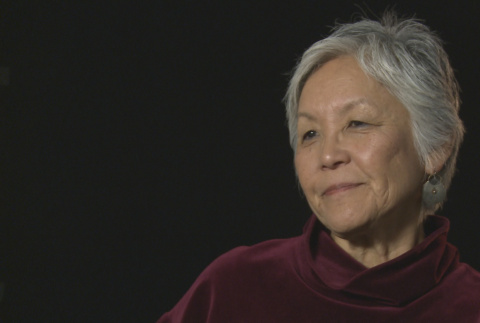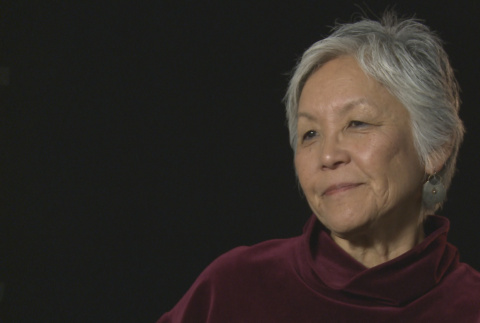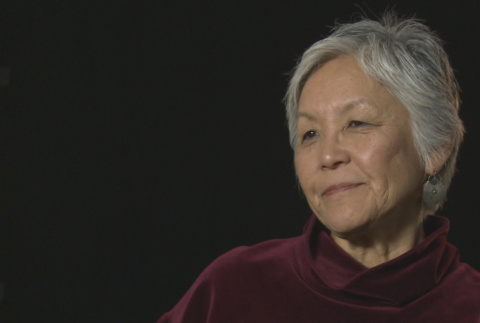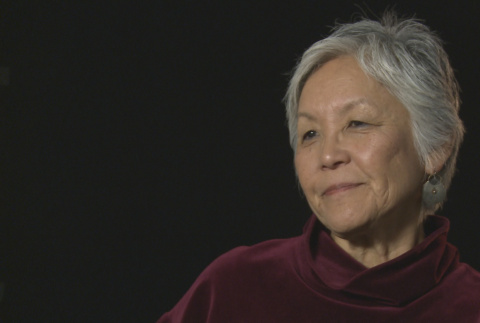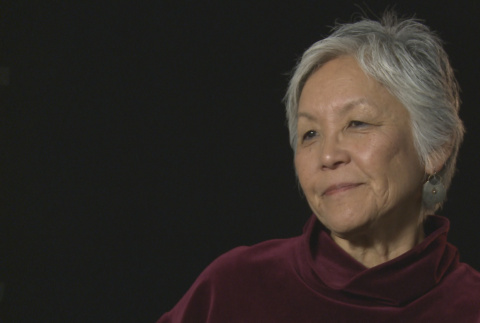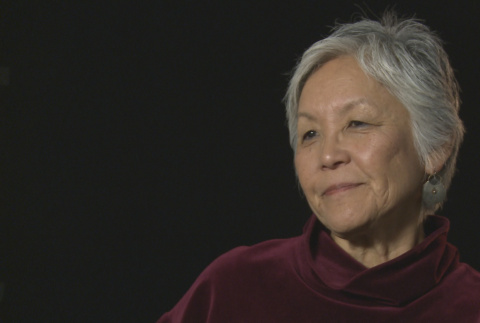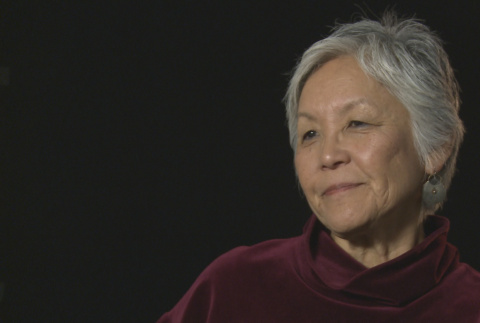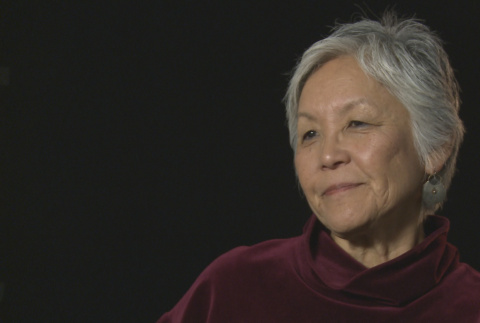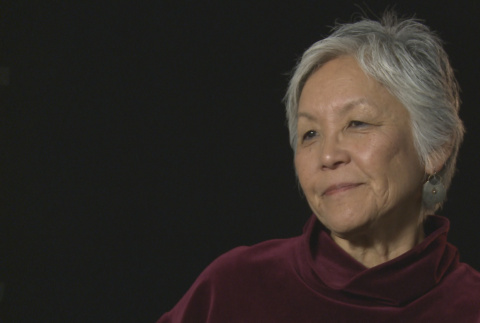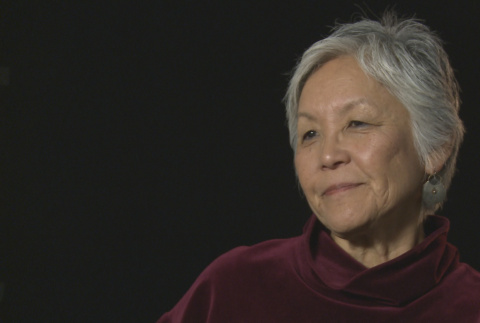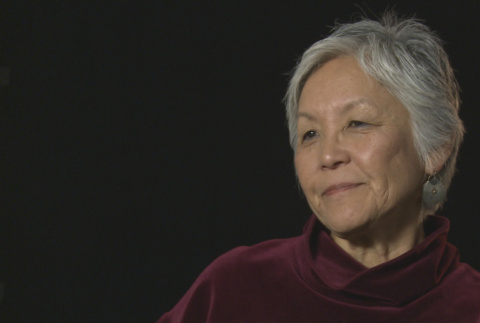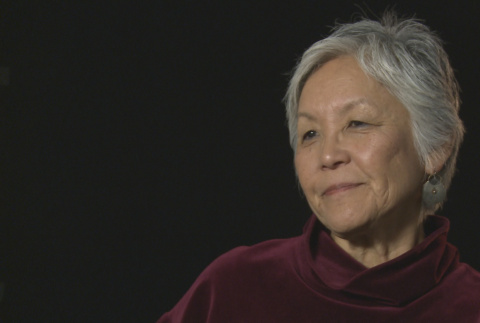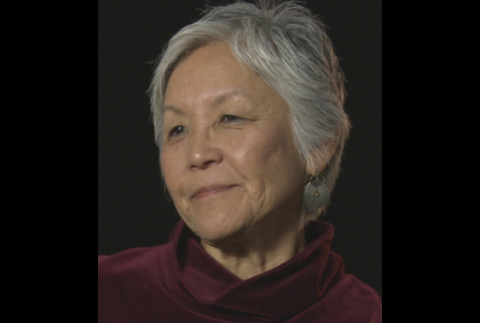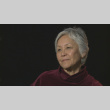20 items
20 items
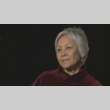
vh
Satsuki Ina Interview (ddr-densho-1000-474)
Sansei female. Born May 25, 1944, in the Tule Lake concentration camp, California. Her parents, both Kibei, grew up in San Francisco, California. During World War II, they were incarcerated at the Topaz concentration camp, Utah. They signed "no-no" on the so-called "loyalty questionnaire," renounced their U.S. citizenship, and were transferred to Tule Lake when it …

img
Japanese Americans registering for mass removal (ddr-densho-151-61)
Original WRA caption: Residents of Japanese ancestry appear for registration prior to evacuation. Evacuees will be housed in War Relocation Authority centers for the duration.
Updated Library of Congress summary: "Photograph shows Shizuko Ina standing behind others waiting to be assigned a "family number" before being removed from their homes and incarcerated in a detention facility …

vh
Satsuki Ina Segment 15 (ddr-densho-1000-474-15)
Discussion of chronic trauma and its impact on future generations
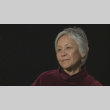
vh
Satsuki Ina Segment 12 (ddr-densho-1000-474-12)
Unearthing childhood memories of camp through sharing with others
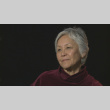
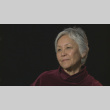
vh
Satsuki Ina Segment 4 (ddr-densho-1000-474-4)
Wartime trauma parents experienced ripples down to children

vh
Satsuki Ina Segment 10 (ddr-densho-1000-474-10)
While in separate camps, parents exchanged clandestine notes about the future
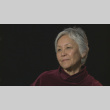
vh
Satsuki Ina Segment 7 (ddr-densho-1000-474-7)
Community response to film about parents' wartime experiences

vh
Satsuki Ina Segment 14 (ddr-densho-1000-474-14)
Effects of the wartime experiences on the Sansei generation

vh
Satsuki Ina Segment 8 (ddr-densho-1000-474-8)
Seeing a photograph of father in an exhibit at the Smithsonian

vh
Satsuki Ina Segment 6 (ddr-densho-1000-474-6)
Growing up with a feeling of increased sensitivity: "there was always this kind of subtext of danger"
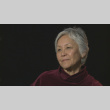
vh
Satsuki Ina Segment 13 (ddr-densho-1000-474-13)
"In order to understand the healing, you have to understand the trauma": creating a coherent narrative about life
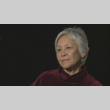
vh
Satsuki Ina Segment 11 (ddr-densho-1000-474-11)
Parents disagree on whether to live in Japan after World War II

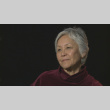
vh
Satsuki Ina Segment 2 (ddr-densho-1000-474-2)
During World War II, parents answered "no-no" on the so-called "loyalty questionnaire"
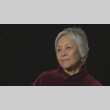
vh
Satsuki Ina Segment 3 (ddr-densho-1000-474-3)
Terminology used to describe the wartime dissidents at Tule Lake

vh
Satsuki Ina Segment 9 (ddr-densho-1000-474-9)
Reuniting with father in camp as a toddler and not remembering him

vh
Satsuki Ina Segment 16 (ddr-densho-1000-474-16)
Involvement in the issue of immigration and detention facilities on the southern border

Narrator Satsuki Ina
Sansei female. Born May 25, 1944, in the Tule Lake concentration camp, California. Her parents, both Kibei, grew up in San Francisco, California. During World War II, they were incarcerated at the Topaz concentration camp, Utah. They signed "no-no" on the so-called "loyalty questionnaire," renounced their U.S. citizenship, and were transferred to Tule Lake when it …
